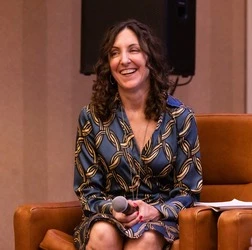What Is a Chief Wellness Officer in HR?
Add bookmark
Healthcare organizations hired Chief Wellness Officers for years, even before the pandemic. Now, Human Resources leaders and other executives are recognizing the necessity of having someone in charge of the team's wellbeing. While the role of Chief Wellness Officer is not ubiquitous at organizations outside healthcare, it is becoming more visible.
After all, the United States is facing what the White House describes as a mental health crisis. In fact, 50 million Americans are experiencing a mental illness, according to Mental Health America. The World Health Organization reports a 25% increase in the prevalance of anxiety and depression worldwide since early 2020. HR leaders who responded to the latest State of HR report said burnout was the top cosequence of the pandemic.
The Role of Chief Wellness Officer
Historically, Chief Wellness Officers have been C-suite-level executives, who work closely with the Chief Human Resources Officer (CHRO). Among the skills they possess are understanding and explaining the business imperative of wellbeing, experience and knowledge of mental health and wellness, empathetic leadership, creativity, collaboration, change management and other CHRO expertise, an ability to grasp analytics, and solve problems. Typically, they have 10 to 15 years of previous experience in recruiting and retaining top talent.
In healthcare, the role is common enough to have ignited a Stanford Medicine Chief Wellness Officer executive course. The title can be different from place to place. Chief Wellness Officer is likely in a healthcare setting. However, Chief Wellbeing Officer and Chief of Mental Health, exist as job titles, too.
The American Medical Association describes the job as being to develop organizational strategy and guide system-level and system-wide efforts to improve professional fulfillment. In the past, the position risks gettin lost in the "compliance-based HR function," according to Forbes. Organizations have to change their culture to put an emphasis on wellbeing and wellness. This shift in mindset is part of the grand transformation taking place at workplaces post-COVID.
INTERVIEW: How to Make Mental Health and Wellness a Top Priority
The Next Step in Mental Health and Wellness
In 2021, Delta Airlines hired Harry Ting for the newly created position of Chief Health Officer. Ting's main objective was to respond to the pandemic and tend to the wellness of staff and customers. However, the airline opted to keep him on to respond to the epidemic of burnout. This is more comprehensive position, but it is indicative of the trend of treating the mental health of employees in the same way as organizations would their physical health.
Already CHROs and their teams have taken on more responsibility when it comes to employees' mental health and wellness. They are training managers to be more empathetic, helping people better tend to work-life balance, investing in programs and tools for stress reduction, and encouraging one-on-one and small group check-ins, especially for those working remotely.
READ: HR Job Titles of the Future
Frankly, many have talked about the challenges. First, managers have to figure out where to draw the line, so they respect people's privacy while also making sure they are feeling all right. Second, managers and HR leaders are not trained for this sort of counseing and comforting.
This is new territory for most people in Human Resources. The expectation and burden is tremendous. After all, many of them are facing their own personal challenges and stresses. More than 40% of teams are struggling under the weight of too many projects and responsibilities, according to a Society for Human Resource Management survey of 726 HR practitioners in seven countries last year.
As the future of work arrives, Chief Wellness Officers will become more common at organizations in healthcare and beyond. The pandemic revealed the need people have to focus on mind, body, and soul. It also showed that burnout leads to high turnover, which employers must avoid to both maintain stabliity and their budgets. The fact that employee engagement and experience are top priorities means that Chief Wellness Officers will remain in demand.
Photo by Jopwell for Pexels

















